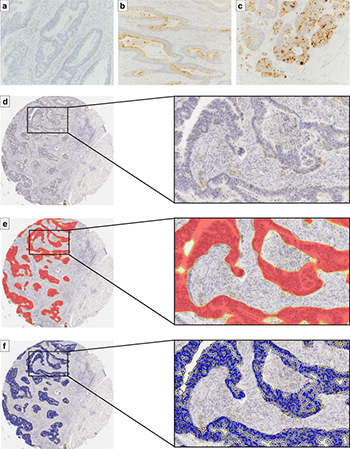July 9, 2020 | by Hannah Thomson
OracleBio continues to enhance its digital pathology software capabilities by integrating Indica Labs HALO AI into its image analysis workflow. This latest step in OracleBio’s development will enable the quantitative digital pathology services provider to meet increasing demand from Pharmaceutical clients globally.
The deep learning add-on, produced by Indica Labs, comes with six distinct neural networks for classification and segmentation of tissue and nuclei, as well as a python plugin for integration of custom neural networks. The AI module fully integrates with OracleBio’s existing HALO® platform and HALO Link system, providing clients with real-time instant access to study images.
The integration of HALO AI will help OracleBio to:
• Deliver data faster: Deep learning has been shown to expedite digital pathology workflows, for example by reducing the amount of time required for manual annotations. The HALO AI module will be run on OracleBio’s AWS Cloud Server, allowing for multiple users analysing simultaneously on high powered GPUs in the cloud, which will further improve OracleBio’s turnaround time.
• Conduct more complex analysis: The HALO AI module will help OracleBio to address more challenging image analysis studies for example, by automated detection of kidney glomeruli and phenotyping of nuclei in H&E-stained tissues.
• Improve accuracy and reproducibility: Deep learning algorithms continually improve and get more precise with every additional training iteration.
Steven Hashagen, Chief Executive Officer at Indica Labs, commented:
‘HALO AI has been a gamechanger for high-throughput analysis customers like OracleBio who need solutions that improve both working efficiency and accuracy. As one of our most productive and long-standing HALO customers, we are pleased to see OracleBio expanding their technical capabilities once again with the addition of HALO AI.’
Lorcan Sherry, Chief Scientific Officer at OracleBio, commented:
‘OracleBio strives to be at the forefront of Digital Pathology and is committed to providing high quality services using the most advanced and sophisticated software. This recent expansion of our services to include Indica’s AI module will allow us to further improve our service offering and we are very excited by the benefits this will bring to our clients.’
OracleBio’s AI-powered digital pathology services are available now. To find out more or arrange an initial consultation, please contact OracleBio.
About Indica Labs
Indica Labs is the world’s leading provider of computational pathology software and services. Our flagship HALO® image analysis platform enables fast, quantitative evaluation of tissues using a broad range of artificial intelligence (AI) and computer vision algorithms. HALO Link and HALO AP™ facilitate remote image analysis, collaboration and management. Through a combination of precision, scalability, and usability our software solutions enable pharmaceutical companies, diagnostic labs, research organizations, and Indica’s own contract pharma services team to advance tissue-based research, clinical trials, and diagnostics. For more information, please visit https://indicalab.com or contact info@indicalab.com.
About OracleBio
OracleBio is a leading provider of quantitative digital pathology services to support pre-clinical and clinical Pharmaceutical R&D. Using industry leading image analysis software platforms, the company delivers accurate and detailed quantification of single and multiplex IHC, IF and ISH marker staining allowing for improved decision making within R&D.









